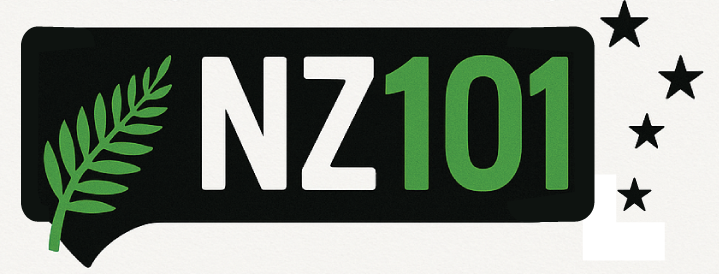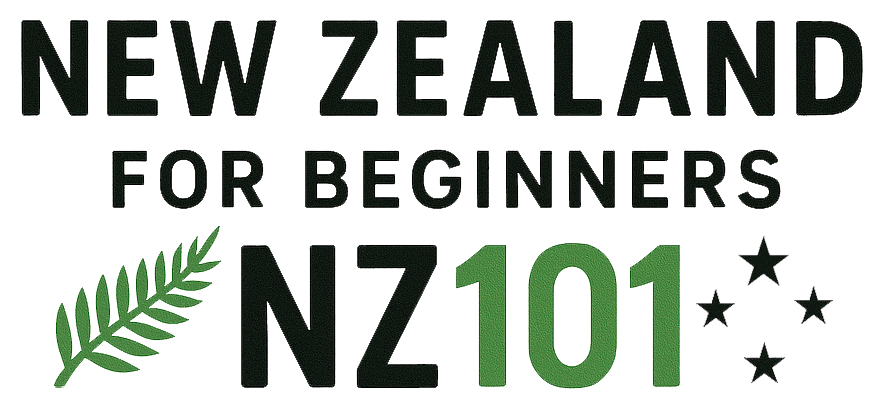Adjusting to life in New Zealand is pretty easy. The language is familiar, the products in the supermarkets are not too alien, the people are friendly, and the natural environment is beautiful. Once you’ve figured out all the systems and processes, the rest falls into place fairly quickly.
It’s only when you’ve lived here for a while that you start to discover quirky and not-so-quirky Kiwi surprises you didn’t know existed.
Here are my eight favourite Kiwi discoveries I learned to accept and appreciate.
Feijoas
Before moving here, I had never even heard of a feijoa. In New Zealand, though, they’re a national obsession.
Every autumn, these green, slightly odd-looking fruits fall from backyard trees, and Kiwis go wild for them.
There are feijoa cakes, feijoa chutneys, even feijoa-flavoured vodka.
You either love them or politely decline every time someone offers you a bag. I’m in the latter category! I’ve tried them once and never again.
Feijoas are actually native to South America and were brought to New Zealand in the 1920s. Now, New Zealand is one of the world’s largest producers of the fruit.
The feijoa is popular for its sweet, tart and juicy flesh, often eaten fresh with a spoon or used in pies, crumbles and other desserts.
Apart from being a versatile fruit, according to WebMD, Feijoas have antibacterial, antifungal and antioxidant benefits.
Check out my Weekly Whirl #17 and scroll down to the bottom, where you’ll find a video featuring Zombies 4: Dawn of the Vampires cast trying some New Zealand snacks, one of which is feijoas.
I also suggest you visit visit Tui Garden for everything there is to know about feijoas.
Capsicums

I asked for peppers once and was met with a blank stare. Here, they’re called ‘capsicums’, which sounds a bit like something you’d study in science class.
The word ‘capsicum’ is the scientific name for the genus of plants, including the fruit we know as bell peppers. It was exported from Britain and ‘stuck’ in former British colonies, including New Zealand.
The scientific term itself likely derives from the Greek word kapto, meaning ‘to bite’ or ‘to swallow’, referring to the fiery flavour of some peppers.
In New Zealand, the term distinguishes the mild, sweet varieties from hot chilli peppers, which are often called ‘chillies’. This contrasts with American and British English, where ‘pepper’ is often used for the mild, large-fruited forms.
Kūmara

Sweet potatoes? Not here.
In New Zealand, you eat kūmara. It’s a staple in roast dinners and a regular on café menus. The word kūmara is of Polynesian origin, but the kūmara (sweet potato) itself was introduced to New Zealand from South America. Evidence suggests the word is derived from the Quechua word cumar.
Māori ancestors brought the plant and the word from Polynesia, where it had been introduced by voyagers who had contact with the Andes region of South America.
Te Ara, The Encyclopedia of New Zealand, has everything there is to know about the kūmara.
Cold houses
I have lived here for 25 years, and I feel more Kiwi than Belgian by now, but one thing I am still struggling with is the cold houses. This one really shocked me.
New Zealand homes are often as cold as the weather outside. Central heating isn’t common, insulation can be minimal, and yet Kiwis carry on as if it’s perfectly normal to sit indoors wearing coats, beanies and fingerless gloves.
The problem is more prominent in rentals and in the older houses. Credit where credit is due, progress is being made through the introduction of the Rental Housing Warrant of Fitness, which is a housing quality checklist containing 29 criteria landlords have to comply with, such as ventilation, heating, safety and hygiene.
But many landlords are still trying to avoid the cost of having to make alterations to their houses so they would comply to the Rental WoF. The Dunedin student flats are notoriously bad. My son used to be a student down there, and I remember how he used to study with his duvet wrapped around him. It was bad.
But don’t let that put you off. Not all homes are that extreme. The new builds are usually well-insulated and properly heated.
I’ll write a blog post just about renting because there is a lot more to talk about than poor heating.
Pies

In New Zealand, pies are practically a food group.
They are a comfort food, a convenient meal and a national icon. We’re not talking apple pie. These are savoury, filled with mince and cheese, steak and mushroom, or butter chicken.
Kiwis consume more pies per person than any other country, with availability in almost every dairy, petrol station, café and bakery. Every Kiwi also has strong opinions about where to find the best one.
There is even an annual pie competition: the Supreme Pie Awards.
Check out Weekly Whirl #12, where I report on the Best Pie Award. Weekly Whirl #14 has the story of Hilary and Jeremy, who hit the road to discover the best pie on the road.
Love for cars (but not driving)
Public transport isn’t exactly New Zealand’s strength, so cars are essential.
The love affair with vehicles is real, but unfortunately, so is the reputation for questionable driving. Think tailgating, speeding, hogging the fast lane on the motorway and ignoring road rules at roundabouts. Yet somehow, everyone seems relaxed about it.
In the 1950s, private car ownership rapidly increased in New Zealand as restrictions eased and wealth grew, leading to a sharp decline in public transport use. Urban planners largely focused on building roads and motorways, further prioritising private vehicles over public transport, which exacerbated congestion and further lowered public transport use.
By the early 2000s, New Zealand had one of the lowest rates of public transport use in the world.
I can only speak for Auckland, but the local government is making significant efforts to improve public transport. Yet, we still don’t have a train that takes tourists from the city centre to the airport!

The harbour bridge has been a problem ever since it became operational. It was never designed for the current volume of traffic of 200,000 vehicles a day, leading to concerns about its long-term structural integrity and viability.
Some advocate for reducing the traffic load by promoting carpooling, telecommuting or developing new housing to decrease the need for long-distance travel, effectively giving the bridge half its intended capacity.
A second harbour crossing has been on the table for as long as I can remember, but so far, nothing has been done about it.
I plan to write a separate blog post on public transport in New Zealand because there is too much to talk about to incorporate it all in this paragraph. Watch the space!
Rivalry with Australia

When you look at New Zealand from overseas, it’s easy to think New Zealand and Australia are one and the same. We are right next to each other, we speak the same language, and we have the same laid-back culture. In fact, in 2023, Labour MP Jamie Strange suggested the countries should not rule out becoming one.
It’s a bit like Belgium (my home country) and the Netherlands. We are neighbours and speak the same language, so why aren’t we one country? In fact, the two countries have distinct cultural and religious differences, which led to the Belgian Revolution in 1830. The Catholic, Flemish-speaking regions revolted against the Protestant Dutch rule and declared independence, and it has been like this ever since.
But I digress.
The difference between New Zealand and Australia is comparable.
You may find this article interesting: Australia vs New Zealand: Cultural Differences
The rivalry is constant and light-hearted. Kiwis and Aussies engage in friendly (and sometimes heated) debates over inventions, foods and cultural items, with pavlova being a classic example.
The disagreement over pavlova stems from historical links and differing traditions for the dessert, with New Zealand generally credited with its creation and Australia popularising it.
But one point firmly in New Zealand’s favour is that we have no snakes, crocodiles or deadly spiders!
Dress code (or lack thereof)
New Zealand has a relatively relaxed culture, and it is common to see people walking barefoot in public places like parks, streets and grocery stores, sometimes even in their pyjamas.
Nobody bats an eyelid; it’s the ultimate casual lifestyle.
The habit is linked to New Zealand’s relaxed lifestyle and a Māori cultural connection to nature. For parents, allowing children to be barefoot is common and seen as a way to promote freedom and connection to the earth.
I remember this TV ad from a few years back. I thought I’d share it with you. I’m sure you’ll enjoy it. It gives you an idea of what to expect when you live near the ocean, which is never far away.


